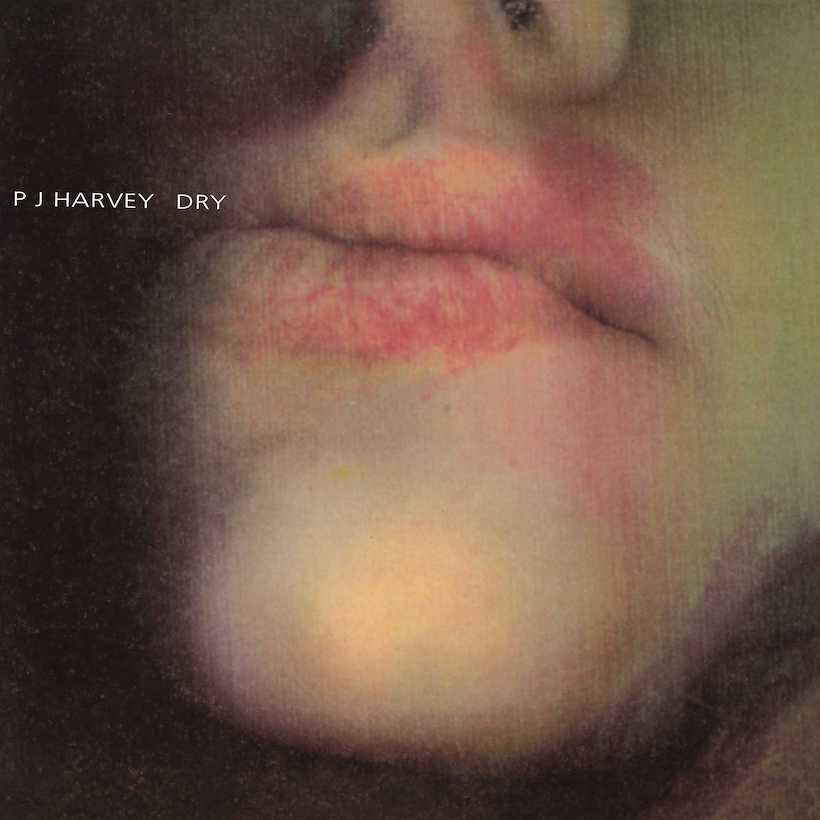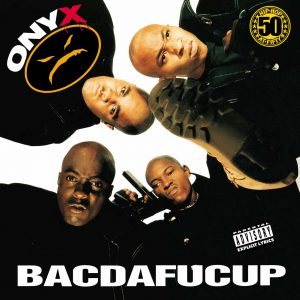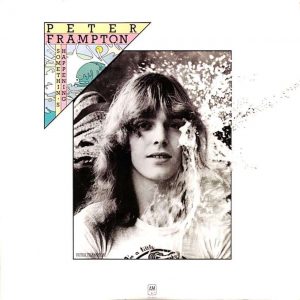Straight out of England’s rural Southwest, Polly Jean Harvey always had a spiritual connection with the American South – the birthplace of backwoods-gothic sin and redemption – and of the blues, which she discovered through her first musical hero, Howlin’ Wolf. With that lineage, it was no surprise that the debut album by this young Englishwoman was unlike anything else that appeared in 1992. Almost three decades later, it’s no stretch to say that it’s still startling. Albums like Dry are so way-out-there that they don’t belong to a decade or scene.
The feral blues-rock underpinning Harvey’s volcanic presence on the record raises the hair on the back of your neck. More than that: hearing Dry‘s gnarled guitar/bass/drums attack is like being in the same room as something disquieting and eternal. Though Harvey’s sonic armory later included a bit of goth, a little electronica, some plain old rock, and something approaching pop, it was the blues that unlocked her storytelling abilities.
The other remarkable thing is that despite being only 22, PJ Harvey was already fully-formed as a singer and songwriter. This “guitar-toting succubus,” in Rolling Stone’s description, had an emotional spectrum that skewed toward drama, and she had no filter. But she wasn’t out of control – as some contemporary reviewers speculated – she was just conveying her truth, figuratively ripping away Band-Aids to show some wounds, while leaving others safely covered.
One 1992 rave review – that didn’t quite grasp her – contended that Dry was an “honest irrational outpouring.” (The reviewer also claimed she’d reinvented “post-rockist guitar.”) In fact, the album was only irrational in the sense that human feelings are irrational. Honest, though, it certainly was. While Polly Jean later rebutted the assumption that her songs were autobiographical, Dry was undeniably influenced by her own life.
She and her band (Rob Ellis, drums; Stephen Vaughan, bass) had moved from her home village of Corscombe, Dorset (population 445), to London in 1991, and it was a wrench. While the move was musically productive – they signed to indie label Too Pure and were championed by influential Radio 1 presenter John Peel – Harvey was deeply unhappy. Her first real relationship had just ended, she was renting a damp flat in North London, and the city felt overwhelming.
Thus, the songs that ended up on Dry have a definite narrative arc. Over 11 tracks, the mood gradually shifts from heartbroken pleading to a thirst for revenge. Aptly, it kicks off with a discordant clang – that’s Harvey’s guitar, welcoming you to the opening “Oh My Lover.” Dark and bass-heavy, it grimly gives her boyfriend permission to see another woman while still involved with Polly.
On “Dress” and “Sheela-Na-Gig” (the first and second singles), Harvey first adopts a teenage whine, begging the guy to look at her in the dress he bought her; in the second song, she offers him her “childbearing hips…ruby-red ruby lips,” only to be rebuffed by his brutal retort, “You exhibitionist…Wash your breasts, I don’t want to be unclean.”
All of this, including the furious payback tracks “Joe” and “Hair,” is thrust along by Harvey’s caustic guitar-playing and the cavernous noise kicked up by drums and bass. In the latter song she’s Delilah, cutting off Samson’s crowning glory as he screams, “Wait!” an image that any wronged lover will relish.
Oh, and there are some first-class hook lines on Dry: the chorus of “Sheela-Na-Gig” especially, is a roaring singalong that could have been made for festival crowds, and the delight of it, is that it’s about ancient stone figures of women displaying their labia.
It’s easy to see why Courtney Love once said, “The one rock star that makes me know I’m sh_t is Polly Harvey.” Madonna, too, is a fan, and there are clear affinities with Björk, whose solo career took off a year after Dry; both women are restlessly creative, and not bound to any template. Natasha Khan of Bat for Lashes was also inspired by Harvey’s “honest, real, quite intimate nakedness” while making her 2012 album, The Haunted Man.
If Dry still packs a punch almost three decades on, imagine how it sounded at the time. And imagine how she appeared to an early 90s audience. The front cover is an extreme close-up of her bruised-looking lips and the back shows her in stark monochrome, topless and watching the camera equivocally. Yet she bridled at the idea that she and her music upended conventional feminine mores: she just was what she was. Dry is a stunning debut from an artist who more than lived up to her early promise.




